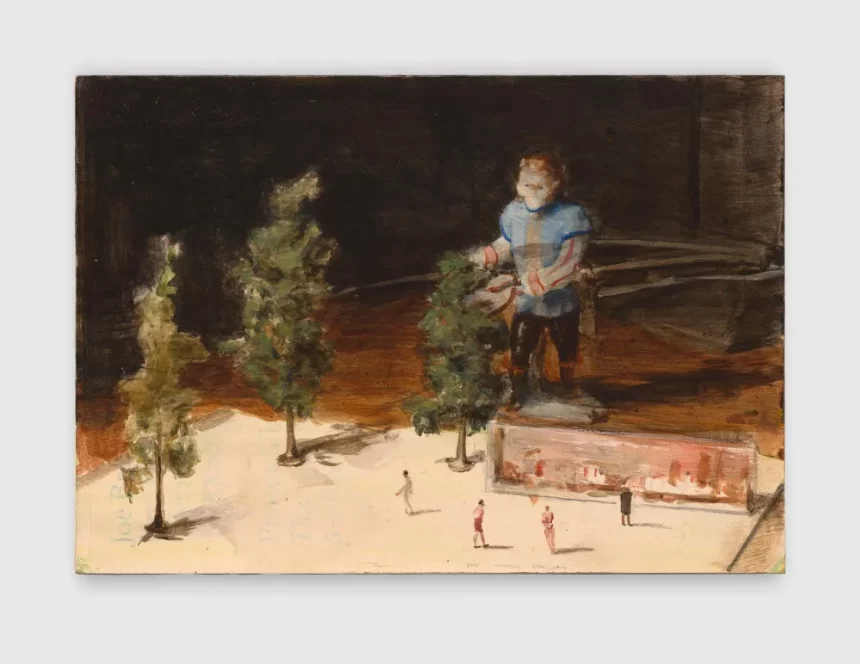Michaël Borremans; The Answer is Not Coming
You can think and think a question, the purpose of waiting, the question of whether there is any purpose, any person meant to appear, but if the person doesn’t come, there is no one and nothing to answer you. It’s dark. You hear a small group of men call to one another in Flemish, see them pass by, their pom-pom heads weighted, a hint of disquieting among them. They’re further away now. Inside Michaël Borremans’s The Constellation – Ten Flemish Actors, 2000.
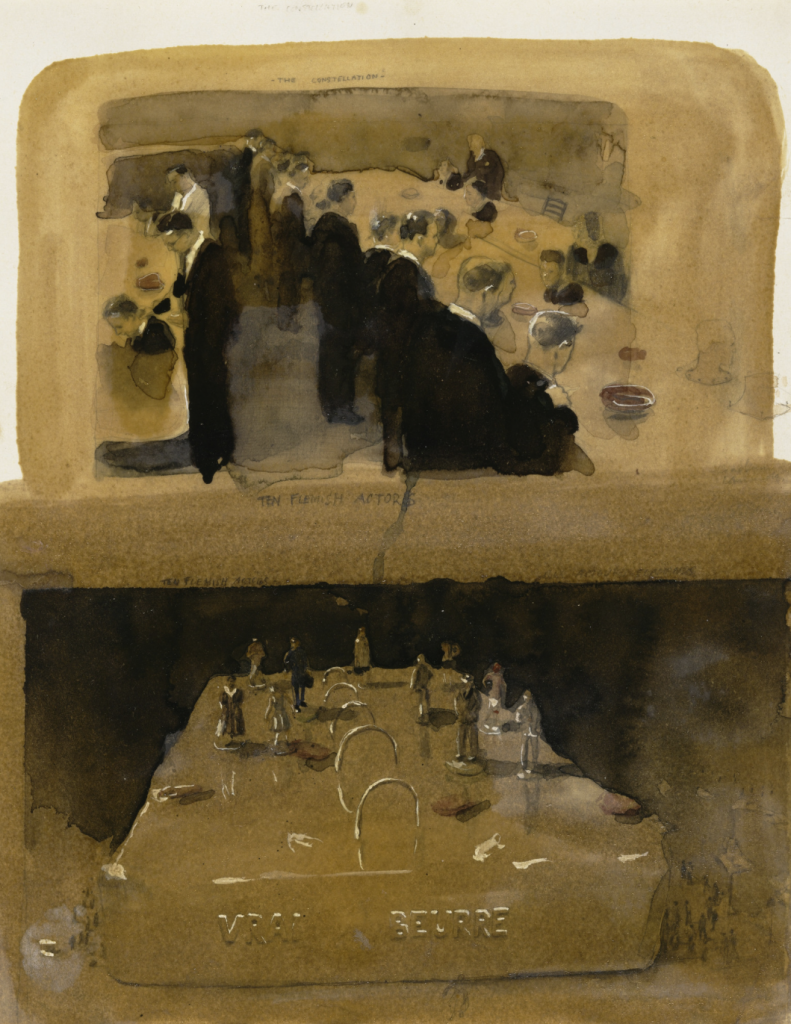
Michaël Borremans. The Constellation – Ten Flemish Actors. 2000 (Source: moma.org) 28 x 22.2 cm), Pencil, watercolour, and varnish on paper
Outside, in Borremans’s Trickland (II-Large), 2002, sticky wind whistles around stagnant trees who sit in rock-like resolution before their audience. The observers are cold, almost too cold to move.
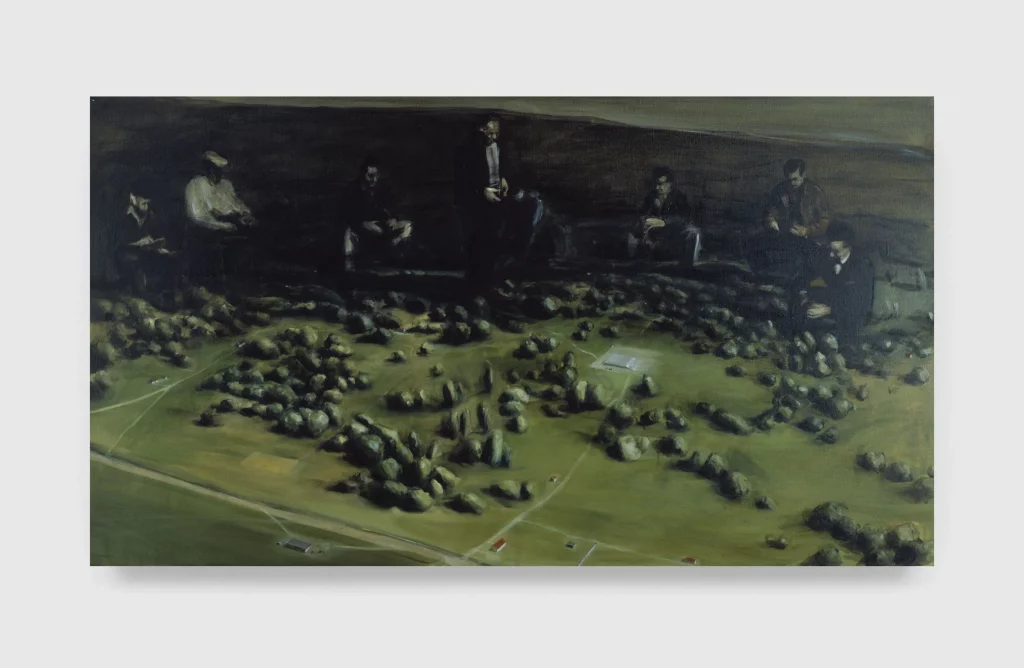
Michaël Borremans. Trickland (II-Large). 2002 (Source: David Zwirner) 100 x 180 cm, Oil on canvas
The answer is not coming. With Borremans’s work we are forced to find an arbitrary point inside the spell of waiting, the open absence, and tear ourselves away. Leave, with no answer. Move on to the next question.
Borremans was born in Geraardsbergen, Belgium, in 1963. Initially he trained as a photographer and etcher in Ghent. In the mid-1990s, Borremans excavated densely atmospheric subjects and forms, often alluding to art historical figures such as Goya, Velázquez, Magritte, and Manet. Borremans’s paintings and drawings are rendered as impervious surreal poems rather than cohesive recitals. In the late 1990s Borremans taught himself painting. Rather successfully.
Borremans’s work has been the subject of solo exhibitions at several prominent institutions, including, Michaël Borremans: The Promise, which is currently on view at Prada Rong Zhai, Shanghai, until 9th June—showcasing twenty-three paintings from various stages in his career as well as one of the artist’s video works. This week in London, David Zwirner will open their exhibition, The Monkey, a new series of paintings on Thursday 6th June. Borremans uses this series of painting to further delve into how the medium can cope with marrying the romantic and the absurd. The porcelain monkey figurine was common in the “singerie” obsession of the Rococo period, where fashionably dressed monkeys would satirically imitate human behaviour.
In Borremans’s painting, The Gardener, 2023, a giant porcelain monkey tends to a tree, towering above oblivious miniature people below. The balance of precision and ambiguity lends itself to the eerie eroticism of the work, upsetting hierarchies.
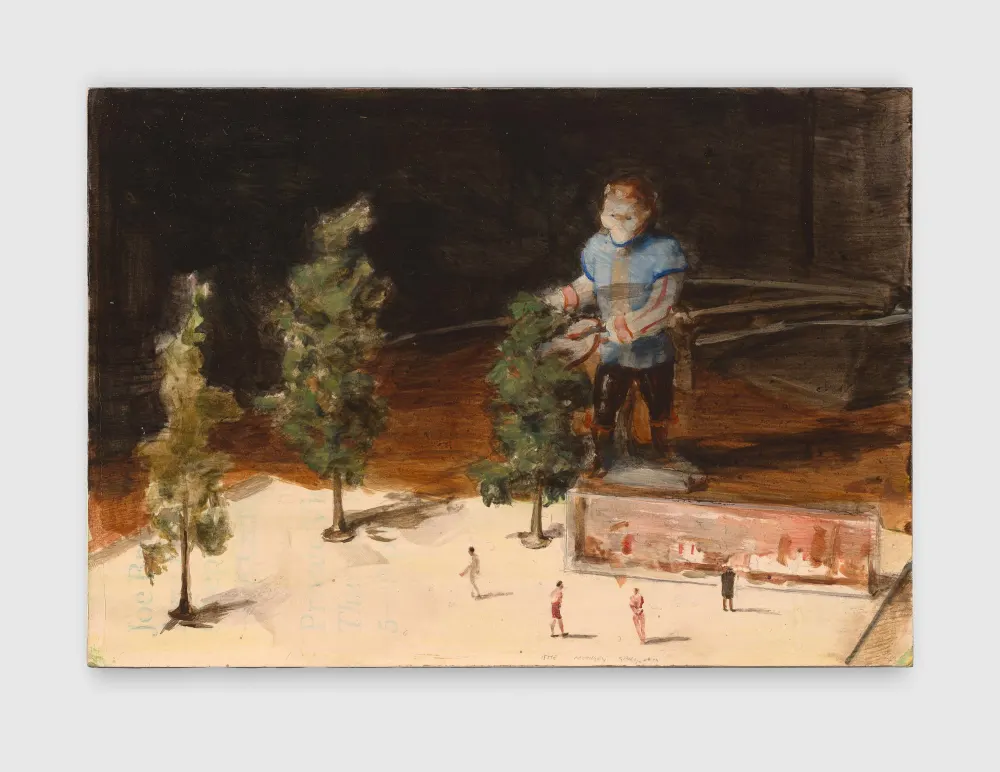
Michaël Borremans. The Gardener. 2023 (Source: David Zwirner) 20 x 29 cm, Oil on wood panel
Though likely better known for his paintings, as a trained engraver some of Borremans’s most unsettling and impressive works are arguably his drawings. The earlier works on paper are resemblant of 17th and 18th century French and Spanish masters such as Fragonard and Goya. See the etch-like seismograph lines of Borremans’s Les messagères du Bonheur from 1991. His drawings offer an intriguing palette with earthy browns and bright whites, some evoking sepia photographs. It is significant to note that of the six works by Borremans that MoMA has in its collection, one is a video work from 2006, and five are works on paper made between 2000 and 2003. His techniques on paper are as sophisticated as those with oil, conjuring in pencil, delicate watercolour washes, and white highlights. Some drawings are daubed in varnish or coffee, stamping the works in tonal depth. Looking at drawing is an intimate experience. The narrative potential of drawing keeps us captive in Borremans’s ambiguous spaces.
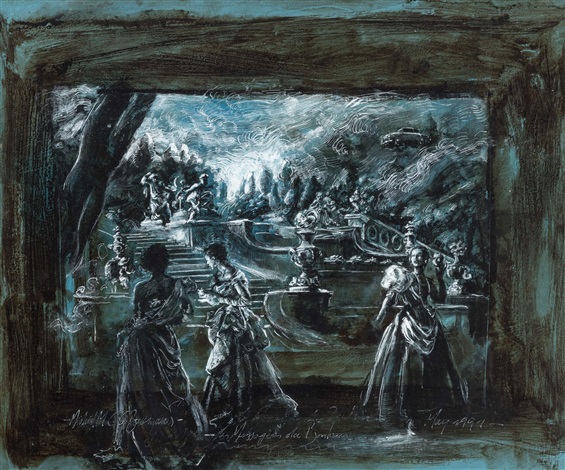
Michaël Borremans. Les messagères du Bonheur. 1991 (Source: Artnet) 50 x 60 cm, Mixed media on board
In Borremans’s oeuvre, representation takes on surrealist and formalist swerves of meaning. Somehow through the balancing act of these sensibilities, we avoid whiplash from meandering sinister, tense, and charged artworks – and instead are left with an acute sense of open absence. The answer is not coming.
